EE offers 60% population coverage on 5G, plus 99% population coverage on 4G & 2G.
 In the UK, EE is a mobile network that offers three types of coverage: 5G, 4G, and 2G. Their fastest download speeds are available on 5G, with average speeds of 135Mbps. About 60% of the UK population is covered by EE’s 5G network.
In the UK, EE is a mobile network that offers three types of coverage: 5G, 4G, and 2G. Their fastest download speeds are available on 5G, with average speeds of 135Mbps. About 60% of the UK population is covered by EE’s 5G network.
EE also offers 99% population coverage across the UK on their 4G and 2G networks. You can access an average download speed of 43Mbps on EE’s 4G network.
In this article, we’ll discuss how you can check EE’s coverage in your area, including where you’re able to see a 5G, 4G, 3G and 2G coverage map for EE. We’ll then discuss each type of coverage in more detail before looking at EE’s international coverage and home broadband coverage.
Contents
EE Coverage Map
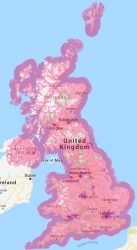 You can use EE’s online coverage map to check the availability of different types of coverage in your area.
You can use EE’s online coverage map to check the availability of different types of coverage in your area.
Go to EE’s online map and enter your postcode to see the types of coverage available in your area. The coverage map will show you results for each type of coverage (including 5G, 4G, 3G and 2G coverage). You’ll also see a breakdown of whether indoor coverage is available, or whether the coverage is only available outdoors.
Check EE Coverage Map (ee.co.uk) →
For the most accurate results, it’s worth providing the name of the device you’re using. This is because certain types of coverage like 4G Calling and 5G Calling are only available on certain phones and this will affect your results.
For more information, read on to find out more about the different types of coverage on EE.
EE Coverage Overview
At present, EE offers four different types of mobile coverage in the UK:
| EE Coverage Type | Coverage Level | Supported Bands & Frequencies |
|---|---|---|
| 5G Coverage | ✔ 60% population coverage |
|
| 4G Coverage | ✔ 99% population coverage (with 4G Calling on compatible phones and plans) |
|
| 3G Coverage | Closed | |
| 2G Coverage | ✔ 99% population coverage |
|
All EE customers are able to access 4G and 2G coverage. This provides a solid foundation of 99% population coverage across the UK, with an average download speed of 43Mbps when you’re connected to EE’s 4G network.
If you’d like to access EE’s 5G network, you’ll need a 5G-ready phone and 5G-ready plan. At present, 5G coverage is only available to EE Pay Monthly mobile customers. Some cheaper SIM-only deals remain 4G-only, along with EE’s Pay As You Go plans which are also limited to 4G.
As well as operating their own network, EE provides the underlying coverage for a number of other brands. In general, you’ll get the same coverage when using one of these other providers.
EE 5G Coverage
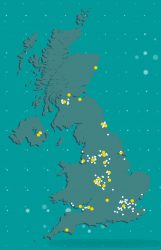 EE’s 5G network now covers around 60% of the UK’s population (as of 2023).
EE’s 5G network now covers around 60% of the UK’s population (as of 2023).
When you’re connected to EE’s 5G network, you can access download speeds of around 135Mbps on average (with peak speeds of up to 1,000Mbps in some cases). You’ll also benefit from more network capacity and a lower amount of latency which should make things more reliable and responsive.
EE’s 5G service uses New Radio (NR) technology. It uses 40MHz of spectrum within band n78 (3500MHz). If your mobile phone was purchased outside the UK, you should ensure it supports 5G coverage in this band.
EE 4G Coverage
 EE was the UK’s first network to launch a 4G service, all the way back in October 2012. You can use EE’s 4G network for high-speed mobile data, along with 4G Calling if you have a device that’s compatible with the service.
EE was the UK’s first network to launch a 4G service, all the way back in October 2012. You can use EE’s 4G network for high-speed mobile data, along with 4G Calling if you have a device that’s compatible with the service.
4G is now the most commonly used form of coverage on EE and it’s likely you’ll be connected to it most of the time. EE offers 99% population coverage on 4G, with an average download speed of 43Mbps according to a RootMetrics analysis (H1 2020). Exact speeds will vary, however, depending on your location and the device you’re using.
If you have a device that’s on this list, you’ll be able to use 4G Calling on EE. You’ll also need a compatible Pay Monthly plan to access 4G Calling.
In the UK, EE’s 4G network primarily uses band 3 LTE spectrum (1800MHz). This is supported by band 20 coverage (800MHz) and band 7 coverage (2600MHz) in many parts of the country. In a few selected locations, additional 4G coverage is also available in band 1 (2100MHz) and band 38 (2600MHz TDD).
EE 3G Coverage
EE’s 3G network was closed in March 2023. For this reason, you’ll no longer be able to use it for calls, texts or mobile data. Previously, EE’s 3G network was formed from the merger of Orange and T-Mobile, that took place in 2010.
EE 2G Coverage
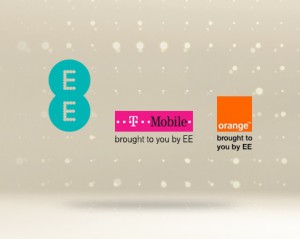
On EE, 2G or GSM coverage is the oldest form of coverage still in use today. Mainly serving as a backup for newer 3G and 4G mobile networks, as well as powering some internet-of-things (IoT) devices, there’s still 99% population coverage available on 2G with the ability to call, text and browse at dial-up internet speeds (up to 0.3Mbps).
EE’s 2G mobile network uses spectrum at 1800MHz. In recent years, some of the 1800MHz spectrum has been upgraded from 2G to 4G. This has reduced the amount of capacity on EE’s 2G network but it should still be possible to get a 2G service across most of the country.
International Coverage
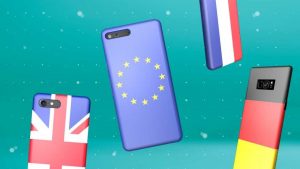 If you’re travelling abroad to another country, EE has an international roaming service allowing you to use your smartphone when abroad.
If you’re travelling abroad to another country, EE has an international roaming service allowing you to use your smartphone when abroad.
International roaming is available at no extra cost when you’re travelling within Europe. Beyond this, additional charges will normally apply unless you have a Roam Further Pass. This gives you inclusive roaming in the USA, Canada, Mexico, Australia and New Zealand.
At the time of writing, EE offers 4G coverage when roaming in 77 destinations. In other destinations, international roaming may be restricted to 2G or 3G speeds.
On EE, international roaming is currently available in the following destinations:
- Afghanistan (3G)
- Albania (4G)
- Algeria (2G)
- Andorra (3G)
- Angola (3G)
- Anguila (3G)
- Antigua and Barbuda (4G)
- Argentina (4G)
- Armenia (3G)
- Aruba (3G)
- Australia (4G)
- Austria (4G)
- Azerbaijan (4G)
- Bahamas (2G)
- Bahrain (4G)
- Bangladesh (3G)
- Barbados (3G)
- Belarus (3G)
- Belgium (4G)
- Belize (3G)
- Benin (Voice only)
- Bermuda (3G)
- Bolivia (Voice only)
- Bosnia Herzegovina (3G)
- Botswana (2G)
- Brazil (4G)
- British Virgin Islands (3G)
- Brunei Darussalam (Voice only)
- Bulgaria (4G)
- Cambodia (3G)
- Cameroon (3G)
- Canada (4G)
- Cape Verde (3G)
- Cayman Islands (4G)
- Central African Republic (Voice only)
- Chad (Voice only)
- Chile (3G)
- China (4G)
- Colombia (3G)
- Congo (Voice only)
- Congo (Democratic Republic of) (Voice only)
- Costa Rica (Voice only)
- Cote d’Ivoire (3G)
- Croatia (4G)
- Cuba (4G)
- Cyprus (4G)
- Czech Republic (4G)
- Denmark (4G)
- Dominica (2G)
- Dominican Republic (4G)
- Dutch Antilles (2G)
- Ecuador (Voice only)
- Egypt (3G)
- El Salvador (2G)
- Equatorial Guinea (Voice only)
- Estonia (4G)
- Falkland Islands (Voice only)
- Faroe Islands (Voice only)
- Fiji (Voice only)
- Finland (4G)
- France (4G)
- Gabon (Voice only)
- Gambia (3G)
- Georgia (2G)
- Germany (4G)
- Ghana (4G)
- Gibraltar (3G)
- Greece (4G)
- Greenland (3G)
- Grenada (3G)
- Guadeloupe (3G)
- Guatemala (Voice only)
- Guiana (French Department of) (3G)
- Guinea (3G)
- Guinea-Bissau (Voice only)
- Guyana (2G)
- Haiti (3G)
- Hong Kong (4G)
- Hungary (4G)
- Iceland (4G)
- India (4G)
- Indonesia (4G)
- Iran (3G)
- Iraq (3G)
- Ireland (4G)
- Israel (4G)
- Italy (4G)
- Jamaica (4G)
- Japan (4G)
- Jersey (4G)
- Jordan (4G)
- Kazakhstan (3G)
- Kenya (4G)
- Korea (South) (4G)
- Kuwait (3G)
- Kyrgyz Republic (Voice only)
- Laos (Voice only)
- Latvia (4G)
- Lebanon (3G)
- Lesotho (Voice only)
- Liberia (Voice only)
- Libya (Voice only)
- Liechtenstein (3G)
- Lithuania (4G)
- Luxembourg (4G)
- Macao (4G)
- Macedonia (3G)
- Madagascar (3G)
- Malawi (Voice only)
- Malaysia (4G)
- Maldives (Voice only)
- Mali (3G)
- Malta (4G)
- Maritime Services (AAM) (Voice only)
- Martinique (3G)
- Mauritius (4G)
- Mexico (4G)
- Moldova (4G)
- Monaco (4G)
- Mongolia (2G)
- Montenegro (4G)
- Montserrat (2G)
- Morocco (4G)
- Mozambique (Voice only)
- Myanmar (3G)
- Namibia (Voice only)
- Nepal (Voice only)
- Netherlands (4G)
- New Zealand (4G)
- Nicaragua (3G)
- Niger (3G)
- Nigeria (3G)
- Norway (4G)
- Oman (4G)
- Pakistan (3G)
- Panama (2G)
- Paraguay (Voice only)
- Peru (4G)
- Philippines (4G)
- Poland (4G)
- Portugal (4G)
- Qatar (4G)
- Reunion (French Department of) (Voice only)
- Romania (4G)
- Russia (4G)
- Rwanda (3G)
- Saudi Arabia (4G)
- Senegal (3G)
- Serbia (3G)
- Serbia (New) (3G)
- Seychelles (3G)
- Singapore (4G)
- Slovakia (4G)
- Slovenia (4G)
- South Africa (4G)
- Spain (4G)
- Sri Lanka (4G)
- St. Kitts and Nevis (3G)
- St. Lucia (3G)
- Sudan (3G)
- Suriname (2G)
- Sweden (4G)
- Switzerland (4G)
- Syria (Voice only)
- Taiwan (4G)
- Tanzania (3G)
- Thailand (4G)
- Trinidad and Tobago (3G)
- Tunisia (4G)
- Turkey (4G)
- Turkmenistan (Voice only)
- Reunion (French Department of) (Voice only)
- Turks and Caicos Islands (4G)
- UAE (4G)
- Uganda (3G)
- Ukraine (3G)
- Uruguay (2G)
- USA (4G)
- Uzbekistan (Voice only)
- Vanuatu (2G)
- Venezuela (Voice only)
- Vietnam (3G)
- Yemen (2G)
- Zambia (Voice only)
- Zimbabwe (2G)
Please see the EE website for more information about international roaming and how much it will cost you.
EE Home Broadband Coverage
 EE’s home broadband service is powered by the Openreach network so has a very different coverage profile to their mobile network.
EE’s home broadband service is powered by the Openreach network so has a very different coverage profile to their mobile network.
EE’s standard broadband is available in most UK homes, with fibre broadband available in more than 90% of homes. EE also offers Fibre Max plans using Gfast and FTTP (full fibre) technology, with around 20% of households currently able to get one of these faster plans.
For customers wanting a 4G or 5G-based alternative to regular broadband, EE also offers the 4GEE Home and 5GEE Home services. This gives you a home broadband connection that’s powered by EE’s 4G or 5G network – an attractive option if you’re unable to get good speeds through regular fixed-line broadband.
For more information, see our EE broadband review.
Frequently Asked Questions
| How can I check EE’s coverage in my area? | You can use EE’s online coverage map to check the availability of EE coverage in your area. Enter your postcode and the name of the device you’re using and you’ll be shown the results for 5G, 4G, 3G and 2G coverage where you live. |
|---|---|
| Does EE offer 5G coverage? | Yes. EE offers 5G coverage to around 60% of the UK’s population. You can see a full list of locations with 5G coverage from EE. |
| What download speeds will I be able to get on EE? | The exact download speeds you’ll get will depend on the coverage in your area as well as factors like the number of other people using EE’s network in your area at the same time. EE says their average download speed is 135Mbps on 5G and 43Mbps on 4G (figures from H1 2020). |
| Does EE offer any international coverage? | Yes. You can continue using your mobile phone when you travel abroad to other countries. There’s no extra charge if you’re travelling to another European country but extra charges will normally apply outside the EU. |
More Information
Please see EE’s official website for more information about their network and coverage in the UK. You can also read our in-depth guide to 5G coverage on EE.


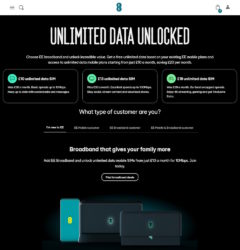
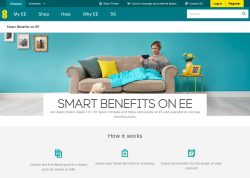
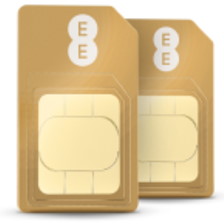
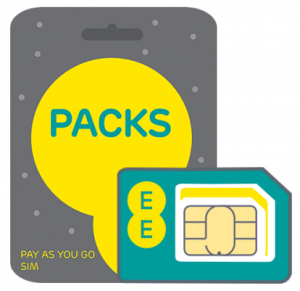


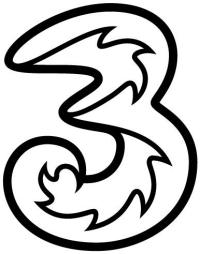
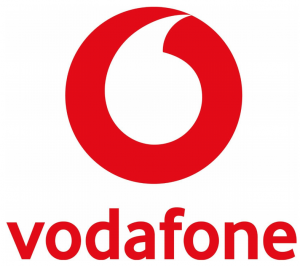
Jon said:
My question relates to whether 3G is adequate for using Waze or other routing app. Or, should I get 4G?
Ken replied:
Hi Jon,
Thanks for your comment and that’s a very good question! With a 3G connection, you’ll typically be able to get download speeds of around 4Mbps. Therefore, this should be absolutely fine for Waze (no urgent need to have a 4G connection).
Ken
Ajay said:
HI Ken
I am on network three and I am thinking to move on 4G EE double speed . Which mobile network is the best 4G EE or three
Ken replied:
Hi Ajay,
I’d probably say that EE has slightly better coverage but there’s no simple answer as it will differ depending on where you live and work. In the first instance, I’d probably compare the results from the Three coverage checker and the EE coverage checker. Once you’ve done that, see my guide to mobile phone coverage in the UK. If you’d like to test out coverage without the commitment of getting a new contract, you could consider ordering a free Pay As You Go SIM card.
Ken
Dana said:
I would say that EE’s signal coverage is generally very poor and rubbish. I was using Virgin sim only for two months last year and hardly had any signal where ever I was and people were complaining to me that the signal quality was so poor that they were not able to hear me. This year I had ordered free sim to call my country from UK not realizing that Delight Mobile is using EE network as when I put that sim into my phone the signal was either none at all or hardly there so EE hasn’t improved in their coverage whatsoever and their coverage map is pretty much a big bunch of lies as it is not true as their coverage just sucks.
Dan Bridgland said:
Hi Ken.
I’ve recently received a new 12 month Sim only deal, sold to me by someone claiming to be from EE (0345 450 0269). I checked several times before agreeing to buy that the contract was a 4GEE Extra contract, the guy repeated several times, yes, Fast 4G. So I agreed and signed up.
Now a couple of days in, after my MNP has completed, I contacted EE customer service to confirm that this contract is a 4GEE Extra contract, however the EE CS agent stated that I’m on a standard 4GEE contract and that 4GEE Extra is not available for Sim only contracts, but, I ‘should be able to get full speed 4G’
I’m using an iPhone 6, in central London, when I run a speed test, I receive speeds of upto 40mb, but not the 70+mb speeds I was previously (occasionally) able to achieve on O2. Bottom line, I’m struggling to determine if I’m able to receive the higher speeds (and eventually 4G+ (LTE-A) with the next iPhone release) with this sim only contract. Can you help?
Ken replied:
Hi Dan,
Thanks for your comment. I’ve done a bit of investigating on the internet: it appears this isn’t an official EE phone number – instead it belongs to an EE partner known as Voice Mobile.
With regards to double speed 4G, I think you’re able to access the higher speeds on a SIM only plan with 2GB of internet or more every month. The 40Mbps speeds seem fairly decent (it’s better than what I’d normally expect for double speed 4G). In theory, you can get 150Mbps on double-speed 4G but this will only be with very good coverage and when nobody else is using the mast. Hence, based on typical speeds, I’d guess that you were indeed using double-speed 4G.
With regards to O2, they use standard 4G with a 2x10MHz channel. The maximum theoretical download speed is 75Mbps. In reality, it’s very rare to actually hear anyone getting the full speed (15Mbps is much more typical). So massive congratulations if you were able to get more than 70Mbps!
Ken
Ed said:
Hi there
Thanks for this article.
I’m just moving to EE because they have the best deal on the new Galaxy S6 Edge, and have signed up for a 4GEE tariff.
I’m moving from O2 and will miss O2 Priority, such as a £1 pizza on a Monday. I’m struggling to find one page on the EE website that lays out the benefits of this tariff. The roaming will be useful, as will tethering. But what is EE film and how do I use it.
Your help much appreciated
Ken replied:
Hi Ed,
Thanks for your comment. Unfortunately, EE doesn’t have one single page listing all their customer benefits – in terms of Entertainment, this is probably the closest page. In regards to your question, EE Film is no longer available. From the 30th March, I believe they’re offering £1 film rentals in conjunction with Wuaki (the £1 film rentals are available from Monday to Wednesday – you’re able to get them by texting FILM to 141). For a list of benefits on the 4GEE Extra tariff, you can see this page from EE here (scroll down towards the box at the end). Besides the double-speed 4G and roaming in Europe, you also get free 0800/0808 calls and an early upgrade 3 months before the end of your tariff.
Ken
Ebb said:
My contract with T-Mobile is due renewal and I have been considering my options for the past few months. It became obvious that I will have to transfer to EE to get a decent broadband speed. I have just had a chat with a member of the EE team on the phone. I was quite surprised at the information he tried pushing down my throat.
I have always thought there was a difference between 4G and Double Speed 4G but to my surprise, this Salesman claimed there wasn’t. He said it was just a difference in wording but I wasn’t convinced. According to him, the only difference between Original 4G and the 4G Extra Plans is that you could use allocated minutes and texts within the EU if you are on the 4G Extra.
He sounded so convincing but I wasn’t convinced so I jumped on Google right after the conversation. Thank heavens I found your blog. Now, what I still can’t understand is whether he was actually ignorant, or was actually deliberately trying to mislead me into taking out a new contract through him. I am very disappointed.
Many thanks to the information, I really appreciate it.
Ken replied:
Hi Ebb,
It is unfortunate to hear that the EE sales don’t even know the features of their own product! The EU calls & texts are one notable benefit of being on the 4GEE Extra plans. Double Speed 4G is the other key benefit though of course you’ll need to be living in a double speed 4G coverage area.
Ken
Ansar malik said:
Hi,
I read your page with great interest.
I’m in bit of dilema, I’ve been with O2 since the iPhone 3g came out. And now I’ve just bought a iPhone 6 sim free.
I can’t decide on whether to stay with O2 or move onto ee (or three).
I’ve notice Slough is double speed 4g, from ee coverage map.
If you were in my shoes, who would you choose?
Thanks
Ansar
Ken replied:
Hi Ansar,
That’s a very good question though it’s one I wouldn’t be able to answer! There are lots of factors you’ll need to consider: the cost of the tariff, the coverage in your area and also the extras that come with your tariff (e.g. EE Wednesdays, O2 Priority, Feel At Home, etc). In my own personal opinion, double speed 4G probably shouldn’t sway your decision as it only has very negligible benefits in day-to-day usage (you’ll only benefit when downloading large files). The quality of coverage will be much more important… be sure to use coverage maps and to do your own testing before choosing a network.
Hope this helps,
Ken
alex said:
You sure you have to pay extra?
http://ee.co.uk/help/mobile-and-home-connections/checking-and-improving-your-network-coverage/our-network/about-4gee-double-speed
Ken replied:
Hi Alex,
Thanks for your comment. EE launched their double-speed 4G service in July 2013. This is when the help article was posted on EE’s website. Customers who signed up before July 2013 were all given double-speed 4G at no extra charge. Since then, EE has split new contracts into two separate bands: standard 4G plans and ‘4GEE Extra’ plans which have the added bonus of double speed 4G.
Hope this helps!
Ken
alex replied:
Ken,
But that page says:
—
Will I have to pay more?
No, double speed 4GEE will be available free of charge to existing 4GEE customers. The service is compatible with all existing 4G smartphones, tablets and dongles.
—
Are you saying this is incorrect? I see nothing on their site which suggests a connection between their 4GEE Extra plans and faster 4G speeds. Do you have a link to the contrary?
Ken replied:
Hi Alex,
Sure! Take a look at EE’s page on Pay Monthly plans – you’ll see there’s a “Network Speed” column (some tariffs have double speed 4G, others only have normal 4G). If you were to choose a phone as a specific example, you’ll find it often costs £3/month extra for double speed 4G. Take the 16GB iPhone 6 as one example – it’s £309.99 upfront plus £24.99/month for 2GB of 4G data or £299.99 upfront plus £27.99/month for 2GB of double-speed 4G data.
To summarise, all plans started pre-July 2013 included double speed 4G at no extra charge. New customers signing up to EE after July 2013 may or may not have the service depending on their tariff.
Hope this helps to answer the question!
Ken
alex replied:
Thanks for that – looks like you’re right. Oddly, the carphone warehouse website doesn’t seem to have any information on this; at least, not on the pages where it shows you phones and tariffs. (They’re also a lot more expensive than getting the phone from EE – I’ve not bought a phone from a shop for 4+ years now but I’m sure they were cheaper than buying from the networks before).
Ken replied:
Hey Alex,
You’re right – the Carphone Warehouse website is a little bit confusing and doesn’t make this info particularly easy to find! You can find it mentioned over at http://www.carphonewarehouse.com/ee – there, they have a breakdown of the ‘EE Regular’ and ‘EE Extra’ plans. There’s also a mention of the 4GEE Extra plans costing “£3 more than a regular plan”.
Ken
alex replied:
Sure, and on that page they state:
How fast is 4G on EE? Here’s a comparison:
AVERAGE DOWNLOAD SPEED
EE 3G 4GEE DOUBLE SPEED 4GEE
3-6 MB/S 12-15 MB/S 24-30 MB/S
Pretty sure that’s wrong, and the units should be Mb/S!